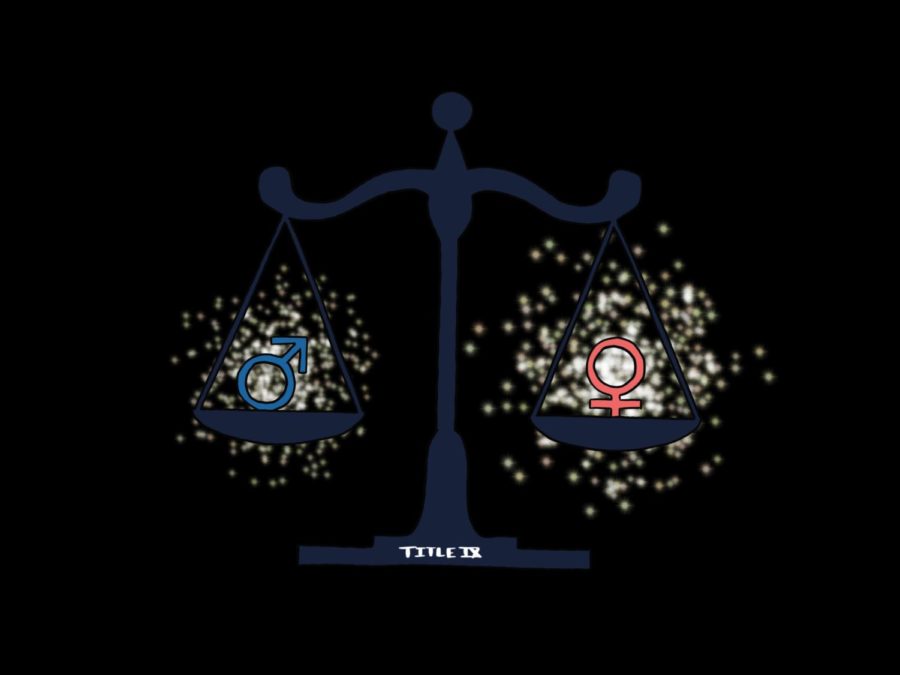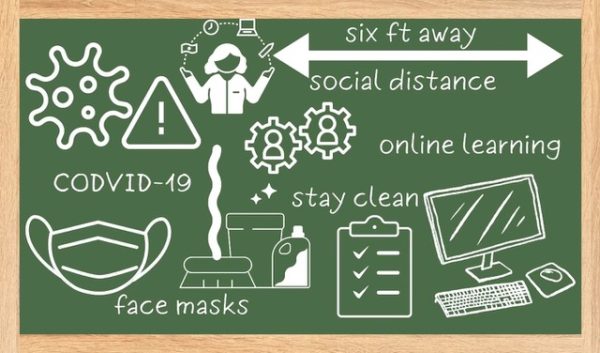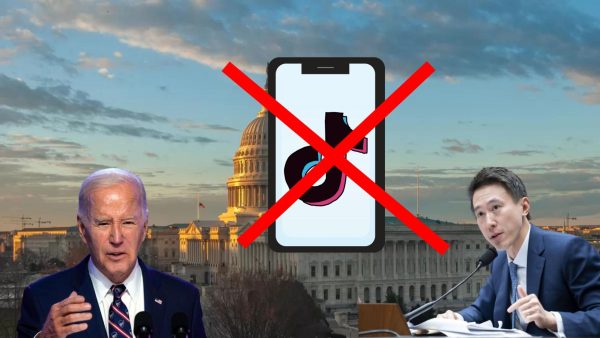The Evolution Of Title IX
Title IX is a civil rights law that prohibits sex-based discrimination for any educational program or activity that receives federal funding.
2022 is the 50 year anniversary of the Title IX law. This law was created to address situations like sexual harassment, sexual violence, or any discrimination or gender biased comments on educational benefits and opportunities.
According to the website Insight Into Diversity, “Title IX is probably the most important law passed for women and girls in Congress since women obtained the right to vote in 1920,” said Bernice Sandler, a women’s rights activist known as the “Godmother of Title IX.”
The evolution of Title IX has gone through many changes since becoming a law:
June 1972
Enacted by Congress, Title IX was signed into law by President Richard Nixon prohibited sex-based discrimination in any type of activity or education program that had federal financial aid. Including women’s sports by giving them more opportunities to participate in activities, and not be treated or looked at differently because they aren’t male.
July 1975
Congress reviews and approves Title IX regulations, and rejects resolutions and bills that disprove the advancement of athletics for women. Participation in women’s athletics was not a part of a requirement in schools.
Federal regulations were issued in athletics for women, and high schools and colleges were given three years to comply. Elementary schools only got one year.
Regulations included that women’s sports were not required in school, but shall be an option. Some higher up people like senators were opposed to the previous regulations because there was still discrimination towards women, and the congress was made up of males.
December 1979
The U.S Department of Health, Welfare, and Education introduces three new and prolonged tests to determine if the athletics programs comply with Title IX requirements. What the test looks at is participation, benefits, and treatment, then the financial assistance for athletics with different genders assigned to them.
September 1980
Female students who attended Yale University filed a case called Alexander vs. Yale, which is the first case to prove sexual harassment is a part of discrimination and is therefore illegal under Title IX.
Yale and higher education institutions establish new grievance procedures for students who have alleged harassment cases.
February 1984
The Supreme Court declares that the law only applies to programs specifically receiving federal funding rather than across the whole institution of athletic and education programs.
For example, Grove City College, an institution that did not accept the government’s financial support, was not required to comply with the protection rules of Title IX. This is a setback of Title IX, as it is giving unfair treatment to different colleges. Some listen and some don’t base on the amount of federal support they have.
March 1988
Congress finally passes the Civil Rights Restoration Act of 1987, also known as the Grove City Bill, reversing the high court’s 1984 ruling in February with support in the House and Senate overrides President Ronald Reagan’s attempt to veto the bill.
February 1992
Supreme Court rules Title IX complainants can seek monetary damages in the case of Franklin v. Gwinnett County Public Schools. Before this, victims of gender discrimination could only seek injunctive relief in the court instead of full justice.
October 1994
The Equity in Athletics Disclosure Act was passed by Congress, which required colleges and other universities to submit annual reports on the opportunities and the resources that both females and males students have.
Reports must include: gender-specific data on enrollment and participation, operating expenses for athletics programs, coaching salaries, and much more.
March 1997
The U.S. Department of Education’s Office for Civil Rights creates issues guidance on sexual harassment cases by students and employees, and required institutions to be held accountable for not preventing and punishing this behavior at work or school.
October 2002
Title IX was renamed Patsy T. Mink Equal Opportunity in Education Act in honor of Mink after her death on August 30, 2002.
March 2005
Under President George W. Bush, The Education Department declares that schools and other educational institutions can use email surveys to determine students’ interests in different sports by gender and provide the athletic programs based on the responses they get.
This decision was criticized because it seemed like The Education Department did this to make it easier for schools to deny funding and opportunities for women’s sports.
April 2010
Under President Barack Obama, The Department of Education reversed the Bush-era policy in March 2005.
April 2011
The Obama administration issues a “Dear Colleague” letter that urges colleges and universities to be more involved in fighting sexual assault on campus.
April 2015
The Education Department releases a new follow-up letter with new additions to the guidelines for Title IX investigators.
New policies requirements for institutions: Use preponderance of the evidence, or the lowest standard of proof in order to determine whether a person accused of sexual assault is utility or not.
May 2016
The Department of Education and the U.S. Department of Justice under Barack Obama issued another new “Dear Colleague” letter that Title IX protects transgender students against discrimination.
The guidelines include allowing transgender students to use bathrooms and locker rooms that align with their gender identity.
February 2017
Education Secretary Betsy DeVos repeals the Obama administration’s May 2016 guidance for transgender students very shortly after taking office.
September 2017
Under President Donald Trump, The Education Department rescinds the Obama administrations guidance on the campus sexual misconduct.
May 2020
The Education Department releases new regulations for handling incidents of sexual harassment and assault after a very detailed review process. The new controversial rules face fierce criticism from women’s rights advocates for not giving enough protection and responsibility for survivors’ rights.
April 2021
Former LGBTQ+ students from Christian Colleges file a lawsuit to the Education Department to protect students for forced conversion therapy, bans on LGBTQ+ housing, and other discriminatory campus policies that they dealt with.
June 2021
The Education Department issues a notice that Title IX also protects transgender and nonbinary students from getting discriminated. 31/50 states took action and ban transgender athletics from participating in school related sports that corresponds with their gender.
December 2021
The Department of Education announces a plan to release cash changes to the Title IX regulations for handling allegations of sexual assault misconduct in April of 2022.
This upcoming June 2022
June 23, 2022, marks the 50th anniversary of Title IX being a federal law in the constitution.
Your donation will support the student journalists of West Linn High School. Your contribution will allow us to continue to produce quality content by purchasing equipment, software, and continuing to host our website on School Newspapers Online (SNO).

Mallory Cooper, sophomore, is the Lifestyle Editor and Facebook Editor for wlhsNOW. This is her second year of journalism, and ever since enrolling she...

























![Game, set, and match. Corbin Atchley, sophomore, high fives Sanam Sidhu, freshman, after a rally with other club members. “I just joined [the club],” Sidhu said. “[I heard about it] on Instagram, they always post about it, I’ve been wanting to come. My parents used to play [net sports] too and they taught us, and then I learned from my brother.”](https://wlhsnow.com/wp-content/uploads/2024/03/MG_7715-2-1200x800.jpg)
![At the bottom of the third inning, the Lions are still scoreless. Rowe stands at home plate, preparing to bat, while Vandenbrink stands off to the side as the next batter up. Despite having the bases loaded, the team was unable to score any runs. “It’s just the beginning of the season. We’re just going to be playing out best by June, [and] that’s where champions are,” Rowe said.](https://wlhsnow.com/wp-content/uploads/2024/03/IMG_3077-1200x900.jpg)





![The teams prepare to start another play with just a few minutes left in the first half. The Lions were in the lead at halftime with a score of 27-0. At half time, the team went back to the locker rooms. “[We ate] orange slices,” Malos said. “[Then] our team came out and got the win.”](https://wlhsnow.com/wp-content/uploads/2023/10/IMG_2385-1200x800.jpg)




















































































